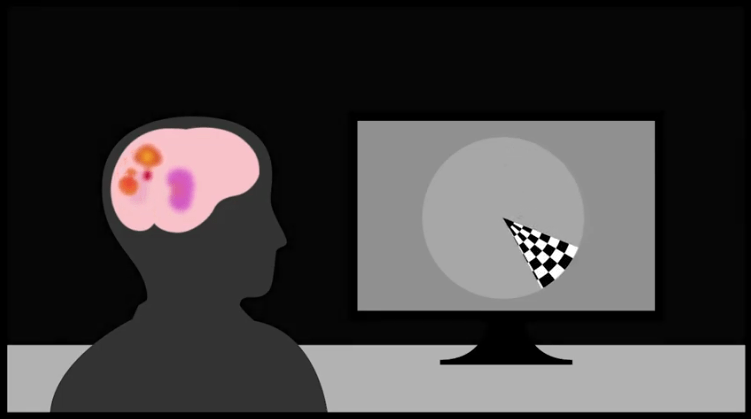Some people are trapped within their own minds, able to think and feel but unable to express themselves because brain injury or disease has damaged their lines of communication with the outside world.
As a step toward helping people in such situations communicate, scientists at Washington University School of Medicine in St. Louis have demonstrated that they can use light to detect what is going on inside someone’s head. The researchers use LED light beamed from the outside of the head inward to detect activity in the area of the brain responsible for visual processing, and then decode brain signals to determine what the person sees. Accomplishing this feat required the development of neuroimaging tools and analysis techniques that move the field a step closer to solving the much more complex problem of decoding language.
The study, available online in the journal NeuroImage, demonstrates that high-density diffuse optical tomography (HD-DOT) — a noninvasive, wearable, light-based brain imaging technology — is sensitive and precise enough to be potentially useful in applications such as augmented communication that are not well suited to other imaging methods.
“MRI could be used for decoding, but it requires a scanner, and you can’t expect someone to go lie in a scanner every time they want to communicate,” said senior author Joseph P. Culver, the Sherwood Moore Professor of Radiology at Washington University’s Mallinckrodt Institute of Radiology. “With this optical method, users would be able to sit in a chair, put on a cap and potentially use this technology to communicate with people. We’re not quite there yet, but we’re making progress. What we’ve shown in this paper is that, using optical tomography, we can decode some brain signals with an accuracy above 90%, which is very promising.”
